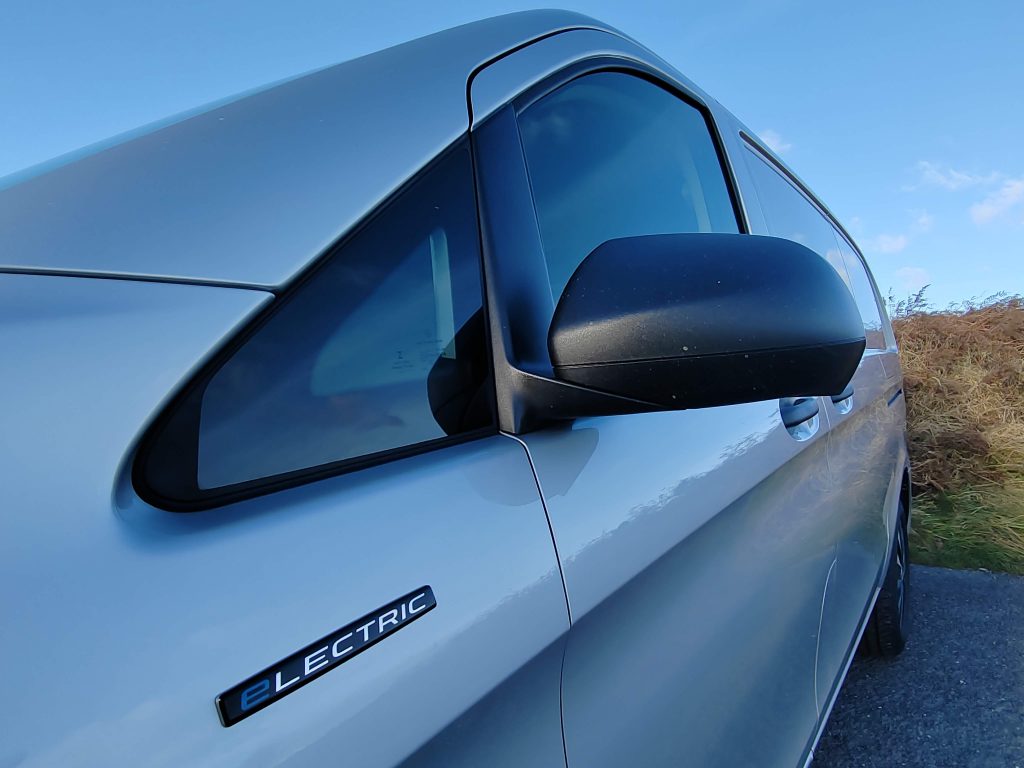Mercedes-Benz eVito Review

Almost all van manufacturers of medium vans now have an electric version available, but possibly one of the van industry’s best kept secrets is that Mercedes-Benz originally launched a zero emission version of the Vito way back in 2010. Known then as the E-Cell, the van was only available directly from the company’s in-house leasing operation, and sales were modest, to say the least, with the UK’s electric van scene very much in its infancy.
The eVito, introduced some time ago had also failed to grab the attention of both fleets and retail buyers, almost certainly due to the official range between charges of just 93 miles. This was unrealistic for almost all operators and, with rival manufacturers introducing vans with over double the range the eVito fell even further out of favour. 2022 saw the introduction of a revised eVito with, amongst other improvements a much larger battery pack.

Motors, Batteries, Range and Charging…
This new 66kWh battery pack eclipses the 41kWh unit in the previous eVito, providing an official WLTP Combined Cycle range of 162 miles between charges. The motor has an output of 85kW, equivalent to 114hp which is probably sufficient for most users but most of the eVito’s competitors offer more powerful drivetrains.
A 7kW home wallbox charger will get you from 0 to 100% of capacity in around 8 hours and an 11kW facility will bring the time down to around 6.5 hours. Find yourself a public 80kW DC chargepoint and the van can be topped up to 80% in 35 minutes.
Trim Levels
Progressive and Premium are the two trim levels offered on the eVito. All the vans come with a decent amount of safety tech, including Active Brake Assist, Attention Assist and Crosswind Assist. Opt for the Progressive and the van will come with a DAB radio and Apple Carplay / Android Auto smartphone integration. In addition, there’s air conditioning, cruise control, a reverse camera and a heated driver’s seat. If you decide to go for the Premium, there are some exterior upgrades including 17” alloy wheels and a chrome grille. Other additions include a leather steering wheel, front and rear parking sensors and electrically folding door mirrors. Most new vans these days seem to come with some connectivity, varying features being available. eVito is no exception, the integrated module can make an automated emergency call in the event of an accident together with GPS generated location information.
Body Options
Offered in L2 and L3 guises the van has a load length of 2831mm in the L2, although, sneakily, Mercedes-Benz includes 370mm of space under the front seats, worth bearing in mind if you’re comparing the eVito with other vans. The L3 has 3061mm but with the same caveat. The L2 has 6.0 cubic metres of capacity with 6.6cu/m being available in the longer van. Twin rear doors are standard, as are sliding doors on both sides.
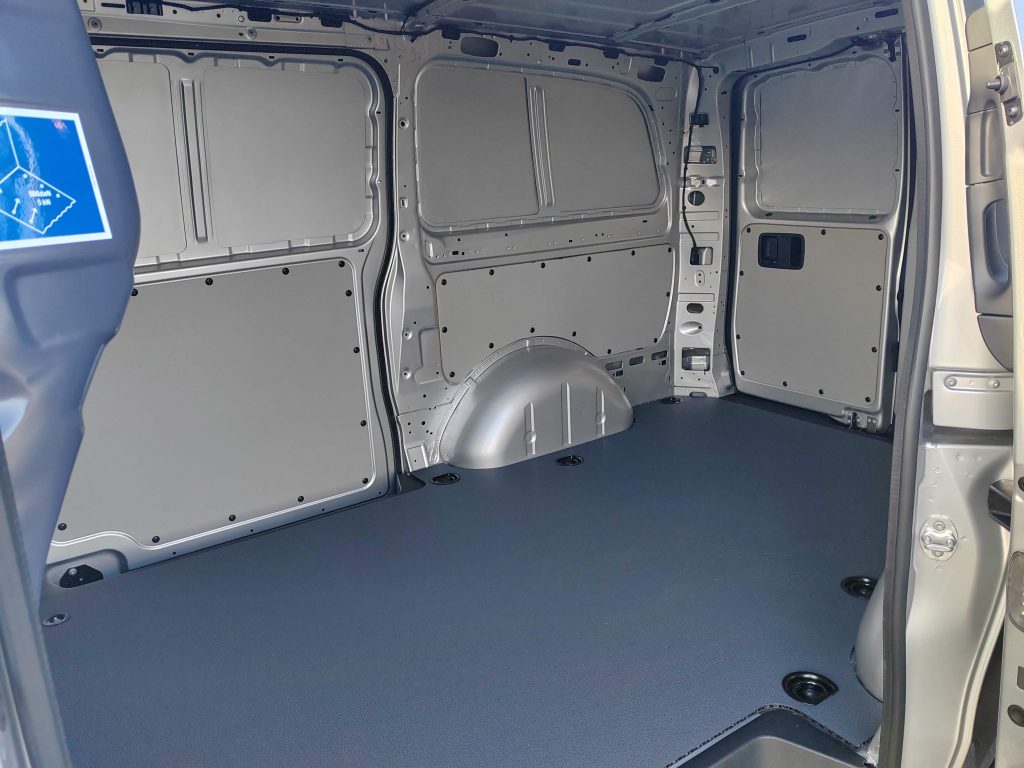
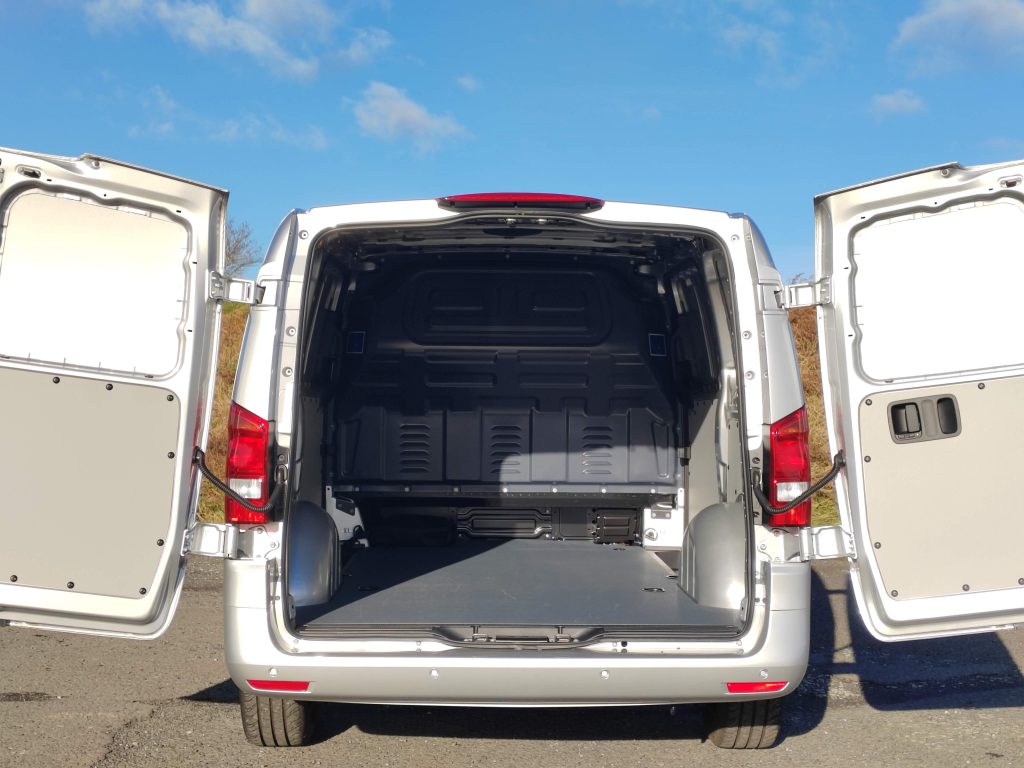
Weights and Towing
Although the payload in electric vans isn’t as high as in a diesel equivalent, the eVito is close to its ICE sibling with a capacity of 824kg to 882kg. The van is not approved for towing, an aspect that most other manufacturers have now catered for in their electric vans.
The Cab Environment
If I’m brutally honest, the interior of the eVito is now looking a little dated, especially in comparison to newcomers to the sector such as the E-Transit Custom and the latest upgraded vans from the Stellantis group. The facia is that bold, flat-fronted design that we’ve seen on the Sprinter and the original Citan, which is unsubtle and a bit ‘in your face’. The centrally mounted 7” multimedia unit is now comparatively speaking on the small side, although, to be absolutely fair it is perfectly large enough to allow for easy viewing and operation and many drivers dislike the 10” or even larger screens that are offered on other vehicles citing them as a distraction. The instrument panel displays all the usual information required by a driver of an electric van, including a large dial which shows the demand being placed on the battery (or when recuperation is taking place).
There is a reasonable amount of cab storage, door pockets, glove box and dashtop areas providing space for odds and ends, although there is no centre console or space under the passenger seat for larger items.
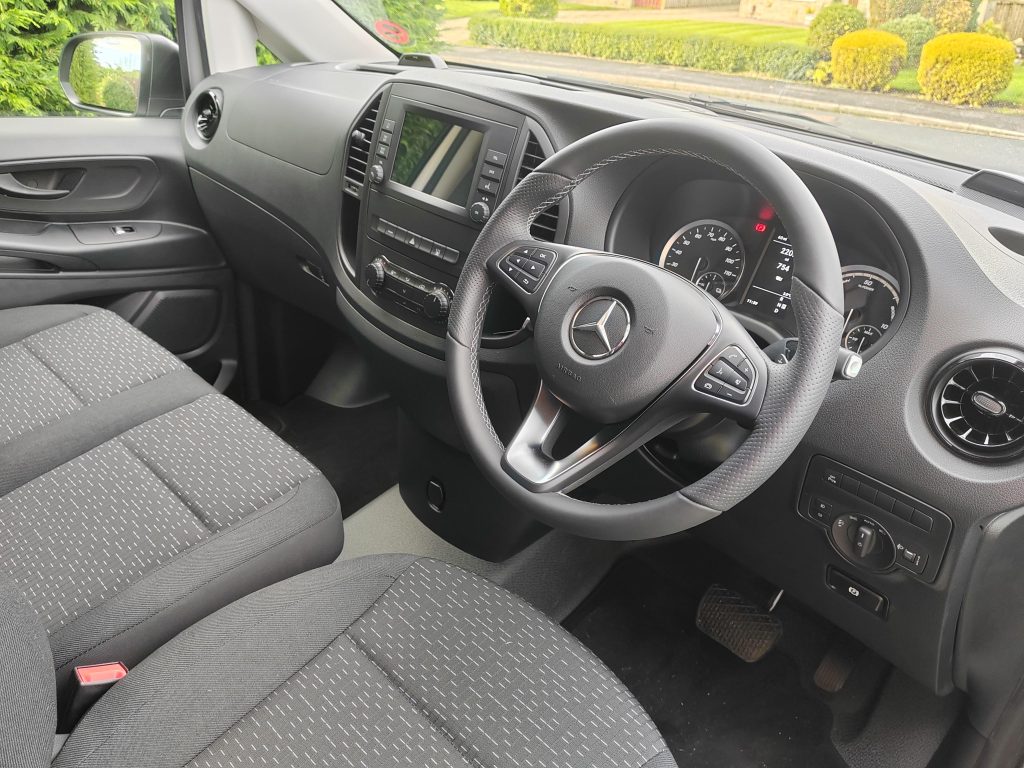
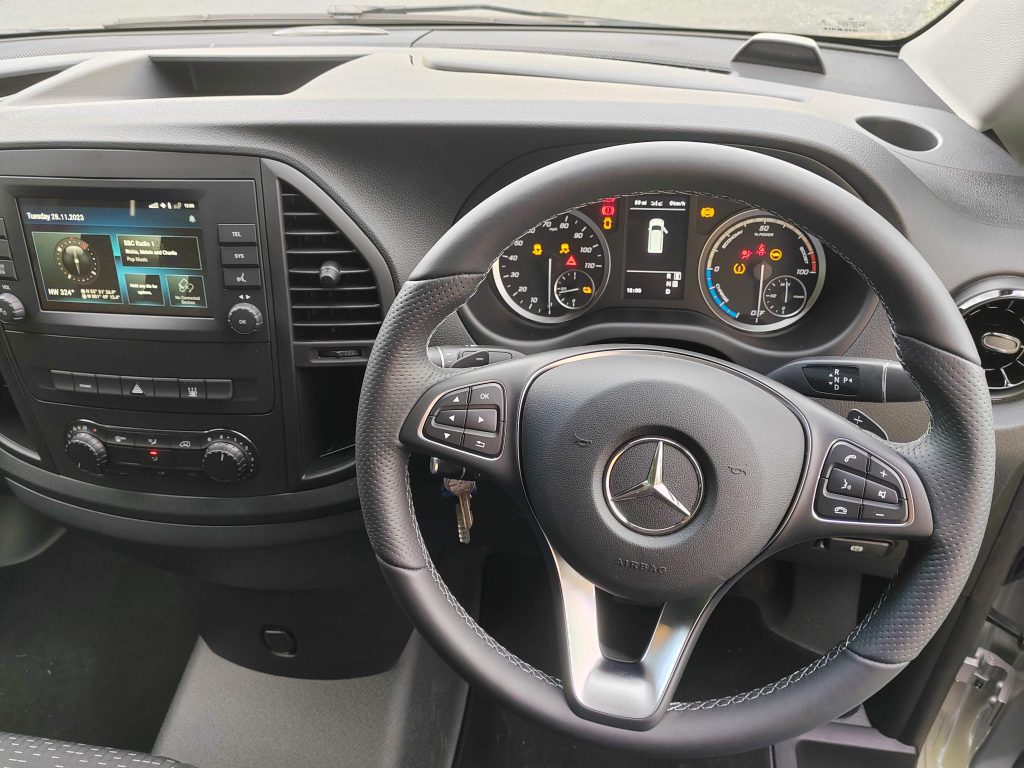
On The Road
Many new vans use a keyless system these days but this isn’t the choice made by Mercedes-Benz, the eVito requiring the familiar plastic ‘plug’ type key to be inserted into the dash and turned fully to bring the van into life. Drive is engaged by moving a stalk on the right side of the column, a place normally occupied by wiper controls. Personally, I prefer the dial type of drive selector, but many will be comfortable with this arrangement.
There’s no electric handbrake here, and things get worse when you realise that the archaic foot-operated parking brake with a handle release has been retained. Notoriously unpopular, it really is time Mercedes-Benz dropped this and moved into the 21st century. Once this is released with the accompanying loud ‘clunk’ the van moves steadily and almost silently away, performance being modest compared to other electric vans out there but, in all honesty, it’s perfectly adequate.
There are several recuperation modes which can be selected via paddle controls behind the steering wheel, providing an increasingly firm braking action when the foot is lifted off the accelerator, so much so that in the highest mode the brake lights are illuminated. This operation places charge back into the battery, increasing the range available. At the default setting, I found the balance to be excellent and in general driving the brakes were only used to bring the van to a full stop.
Otherwise, the driving experience is OK, and reasonably refined although there was an occasional squeak and rattle in the almost brand new test van. Visibility is good, the van handles well and at speed, the only significant sound is road noise – this did seem a little intrusive at times but in any electric van with the absence of any engine noise, other sounds you would otherwise have been unaware of come to the fore.
The range indicator seems to be very accurate and didn’t fluctuate in use, something which other manufacturers could take note of. On a very cold day, a 40-mile drive saw the range drop by 39 miles, although with the lack of a charger at home, deicing and demisting the windscreen took 20 miles off the available range before the van had turned a wheel. In all fairness, this is generally the case with the majority of electric vans, and cab preconditioning whilst still plugged into a home charger should minimise this penalty.
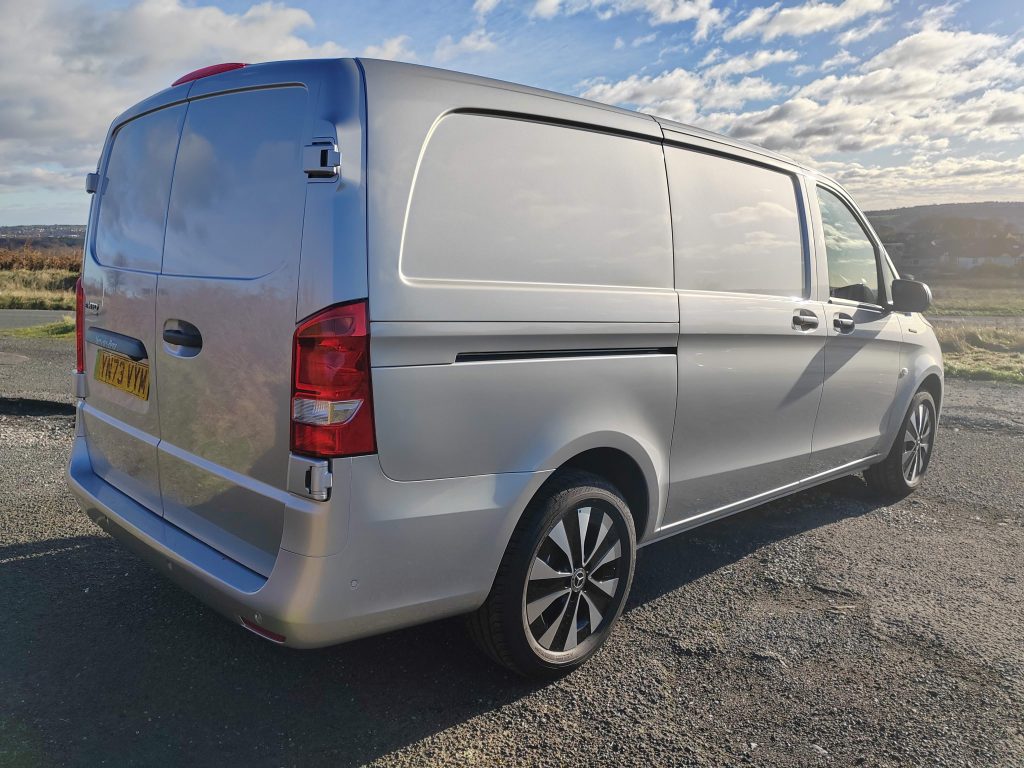
Conclusion.
On paper, it’s hard to fault the eVito. It has a range which, whilst nowhere near class-leading is now practical for many van operators. The equipment level is reasonable. It’s not too bad to drive. It looks pretty good. But… for me, somehow the eVito lags behind the likes of the Vivaro Electric, Ford E-Transit Custom and others. Overall it feels like it was designed quite some time ago, and I’ve always said that somehow the Vito comes across as being originally produced as a people carrier and then turned into a van. The cab is dated and there is that awful handbrake.
The eVito will undoubtedly appeal to those who want their van to look good, and, providing the price is right could now be a compelling reason for the small business to move over to an electric van. It does the job well, but, overall, others do it better.
